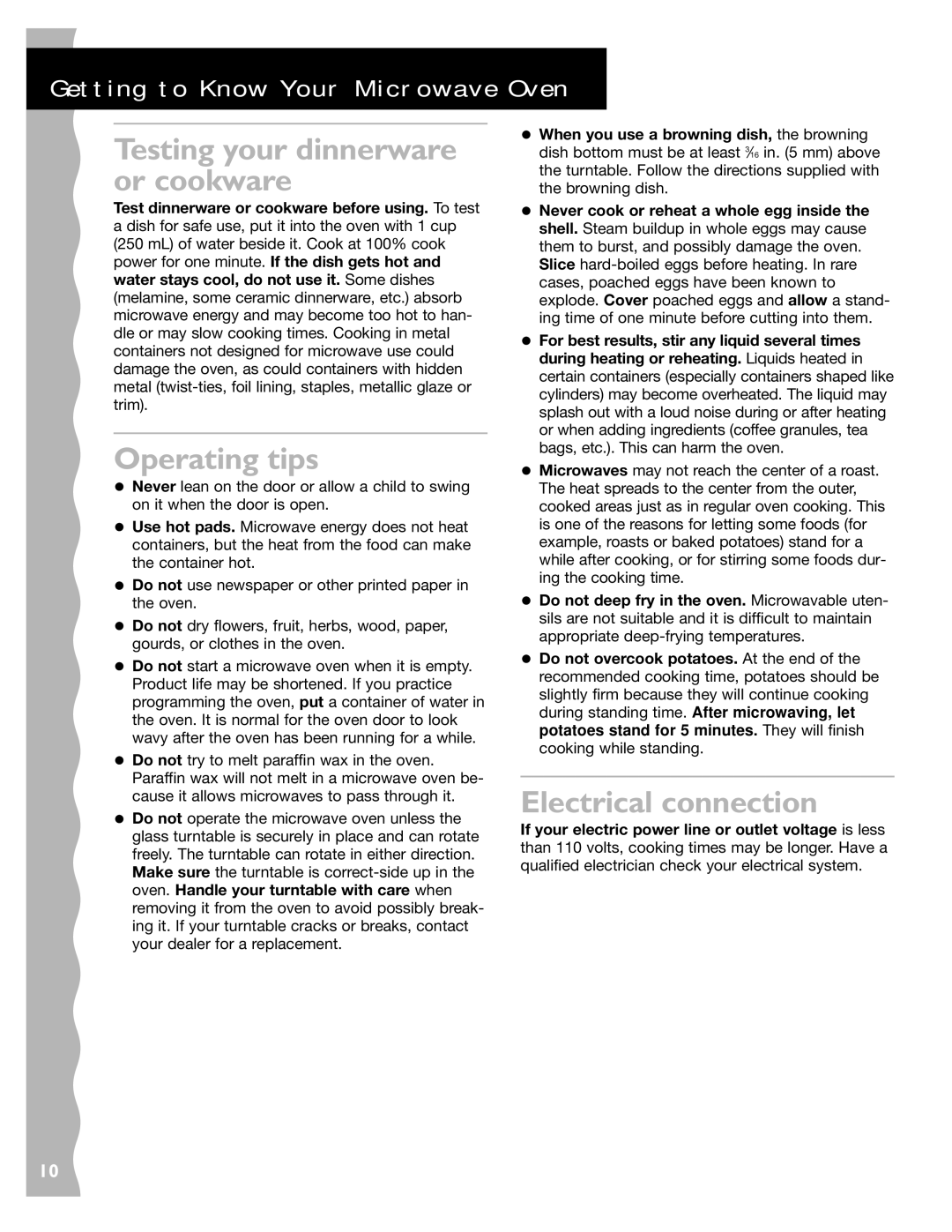KCMC155J, KCMC155JWH, KCMC155JBT, KCMC155JSS specifications
The KitchenAid KCMC155J, KCMC155JSS, KCMC155JBT, and KCMC155JWH represent a versatile line of countertop microwave ovens that effortlessly combine functionality and style. Each model includes key features designed to enhance the cooking experience, making meal preparation quicker and more efficient.One of the standout features of the KitchenAid KCMC155J series is the convection cooking option. This technology utilizes a fan to circulate hot air around the food, allowing for even cooking and browning without the need for a traditional oven. This means users can achieve optimal results when baking or roasting, while also enjoying the convenience of a microwave.
The intelligent sensor cooking system is another impressive characteristic of these microwave ovens. This feature automatically adjusts cooking times and power levels by sensing humidity levels in the food, helping to prevent overcooking. The user-friendly interface makes it easy for anyone to operate, with straightforward controls that simplify the cooking process.
The KCMC155J models also offer a variety of cooking presets, allowing for one-touch cooking of common foods such as popcorn, pizza, and fresh vegetables. This ensures that meals are prepared perfectly every time, taking the guesswork out of cooking.
In terms of design, the KitchenAid KCMC155J series stands out with its sleek and modern appearance. Available in several finishes, including stainless steel, black, and white, these models can seamlessly integrate into any kitchen decor. Their compact size makes them ideal for countertops with limited space while still offering a spacious interior for cooking larger dishes.
Furthermore, the models include a robust grill function, which can be particularly handy for achieving a crispy texture on foods like pizza or baked casseroles. The addition of a steam cooking feature allows for healthy cooking options, steaming vegetables while preserving their nutrients and flavor.
Overall, the KitchenAid KCMC155J, KCMC155JSS, KCMC155JBT, and KCMC155JWH models are designed to offer a blend of innovative technology and elegant design. Their versatile features, like convection cooking and intelligent sensor cooking, make them a valuable addition to any kitchen, enhancing both convenience and culinary creativity. Whether you're reheating leftovers, cooking a quick meal, or trying out a new recipe, these microwaves are equipped to handle all your cooking needs with ease.

